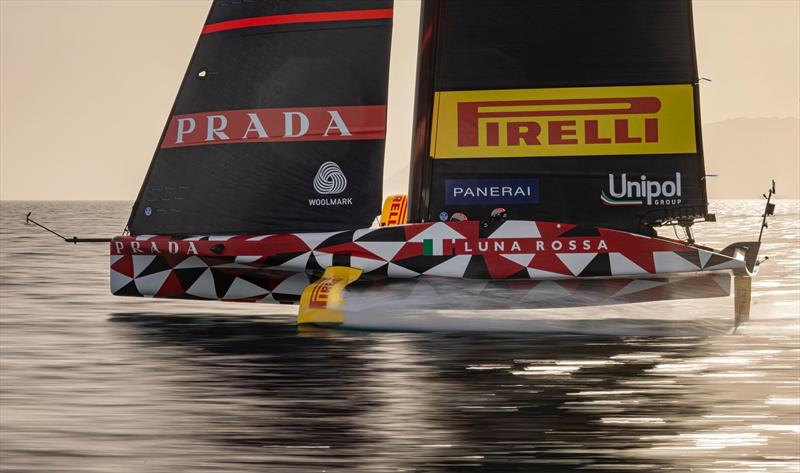
America's Cup: Max Sirena on Luna Rossa's prototype and spy programs
by Luna Rossa Prada Pirelli 2 Nov 2022 23:41 UTC
3 November 2022

Luna Rossa Prada Pirelli's LEQ12 sailing on the Gulf of Cagliari © Carlo Borlenghi / Luna Rossa
Luna Rossa Prada Pirelli launched their LEQ12 America's Cup test or prototype boat in October. Since then they have been sea trialling and commissioning the prototype AC75 yacht which complies with the rules governing use of surrogate yachts in the build up to the 2024 America's Cup.
The prototype is a Luna Rossa Prada Pirelli project conceived, designed and built in-house, in Cagliari.
The base was redesigned for this purpose, to house new areas for carbon lamination, ovens and other spaces that make it more practical, spacious, and functional for the activities of the various departments. The decision to build it in-house was also taken because the team has been reinforced, with the arrival of new resources in the design and shore team departments, including experienced boat builders and laminators.
"This boat allows us to do development and, therefore, outline what will be the fundamental aspects and lines of the AC75," explained the team director Max Sirena. "It also allows us to start immediately in the right gear. Having a new hull to optimize gives a strong physical and mental charge to the whole team," he added.
In addition to boosting performance, Sirena says the prototype will be used to enhance aerodynamic and hydrodynamic development and all control systems.
What will change with the Recon Program, which 'legalizes' spying?
"It's true that today the espionage activity has been institutionalized," he replies, "but, in fact, it doesn’t change things much. In the past we also had spies studying the hulls; the fact is that copying is not as easy as you might think. The bulk of the work today is on control systems and software, and what you can't see (hidden or inside the boat) is far more important than what is in plain sight".
"A revolutionary wing shape cannot be hidden, but photographing it is not enough to copy it. You have to understand how you get to that shape, set it, move it, control it."
"Replicating it without understanding the complex mechanism behind it, in short, is very difficult."
"Think of the double helm configuration we adopted in the last Cup," says Sirena.
"At the beginning it was criticized, then the other teams realized that it worked and tried to imitate us."
"But it didn't go well.
"Developing the automatisms, rhythms and synchronization that took us months, with just a few days to fine-tune was not possible.
"Even though there will be no cyclists on the prototype, they will get on board to get familiar with the boat and the speeds."
"In general, the crew will rotate and we will give everyone the chance to get to grips with this boat, also to give continuity to the sports program - since someone [SW: Ruggero Tita] will be absent preparing for the Olympics or to take part in some external circuit.
"No one is confirmed at the moment because, as I often say, in the end it is the boat that chooses its crew and not the other way around." he concluded.